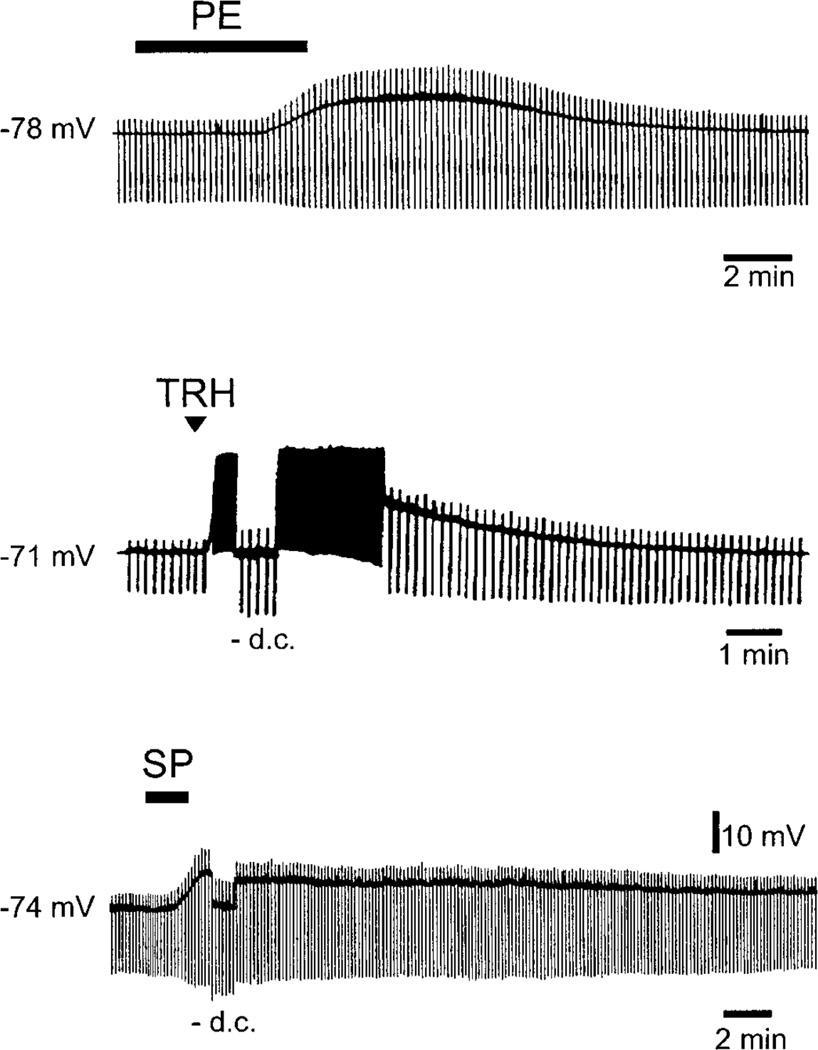FIG. 8.
Different neuromodulators can affect motoneuronal excitability via similar mechanisms. These records show the response of hypoglossal motoneurons to phenylephrine (PE), an α1-adrenoceptor agonist [top trace; from Parkis et al. (958)]; thyrotropin-releasing hormone [TRH; middle trace, from Bayliss et al. (75)]; and substance P (SP; bottom trace). All 3 transmitters induce a membrane depolarization, which can reach threshold for repetitive firing, e.g., see middle trace, spikes at the peak of the TRH response are truncated. The negative deflections in the sample traces, which represent responses to constant-amplitude current pulses, are enhanced by the transmitters, reflecting the transmitter-induced decrease in a resting K+ current. A second component, involving activation of a cationic current, also contributes to membrane depolarization by all 3 transmitters (data not shown). −d.c. indicates negative bias current used to bring the membrane potential back to control level.

